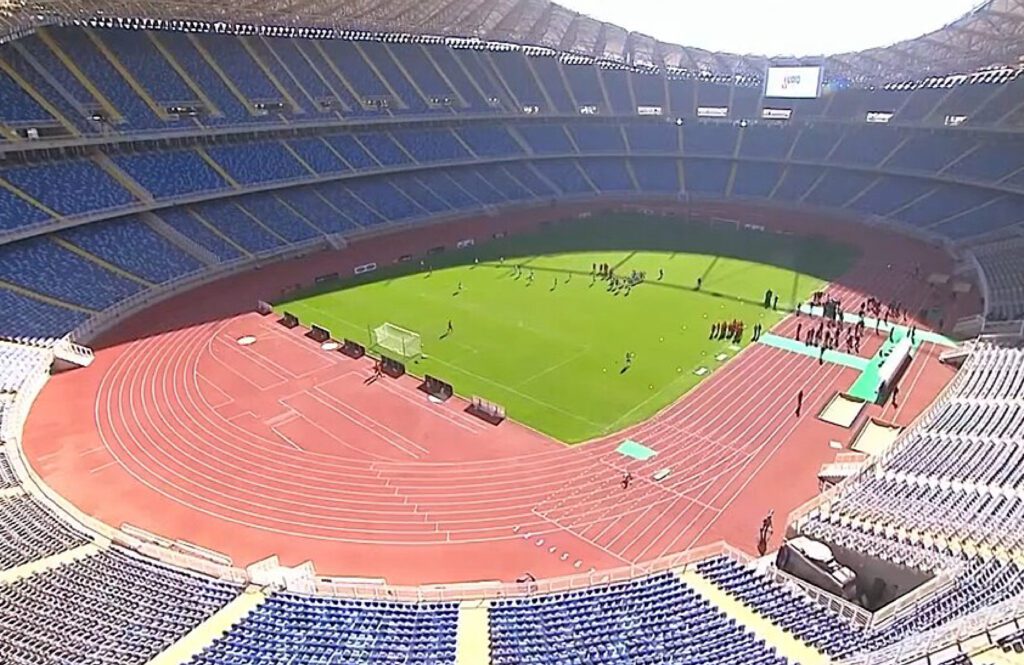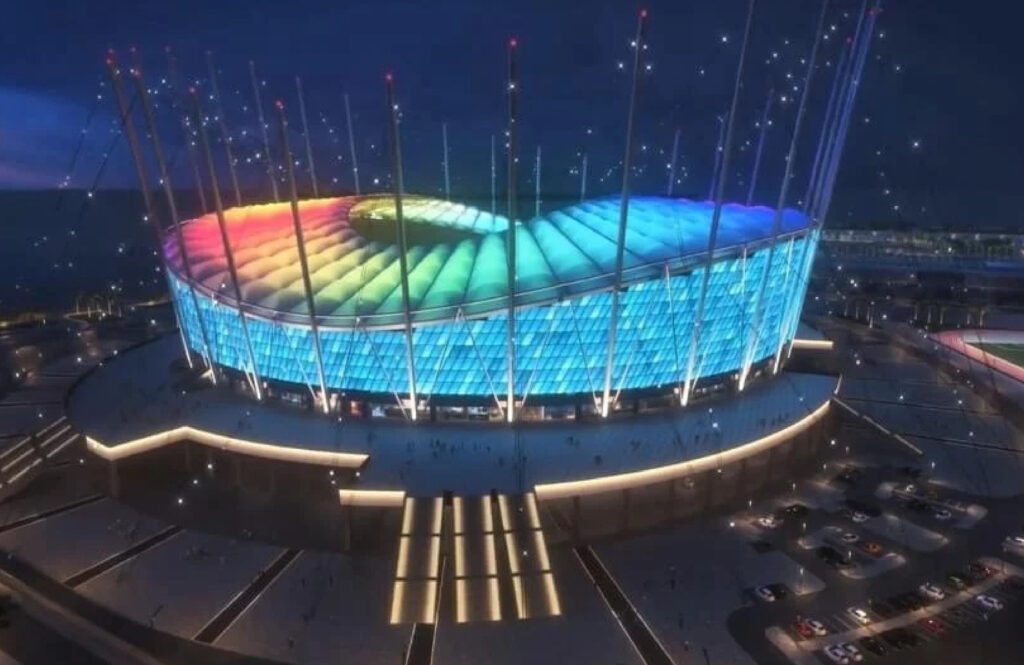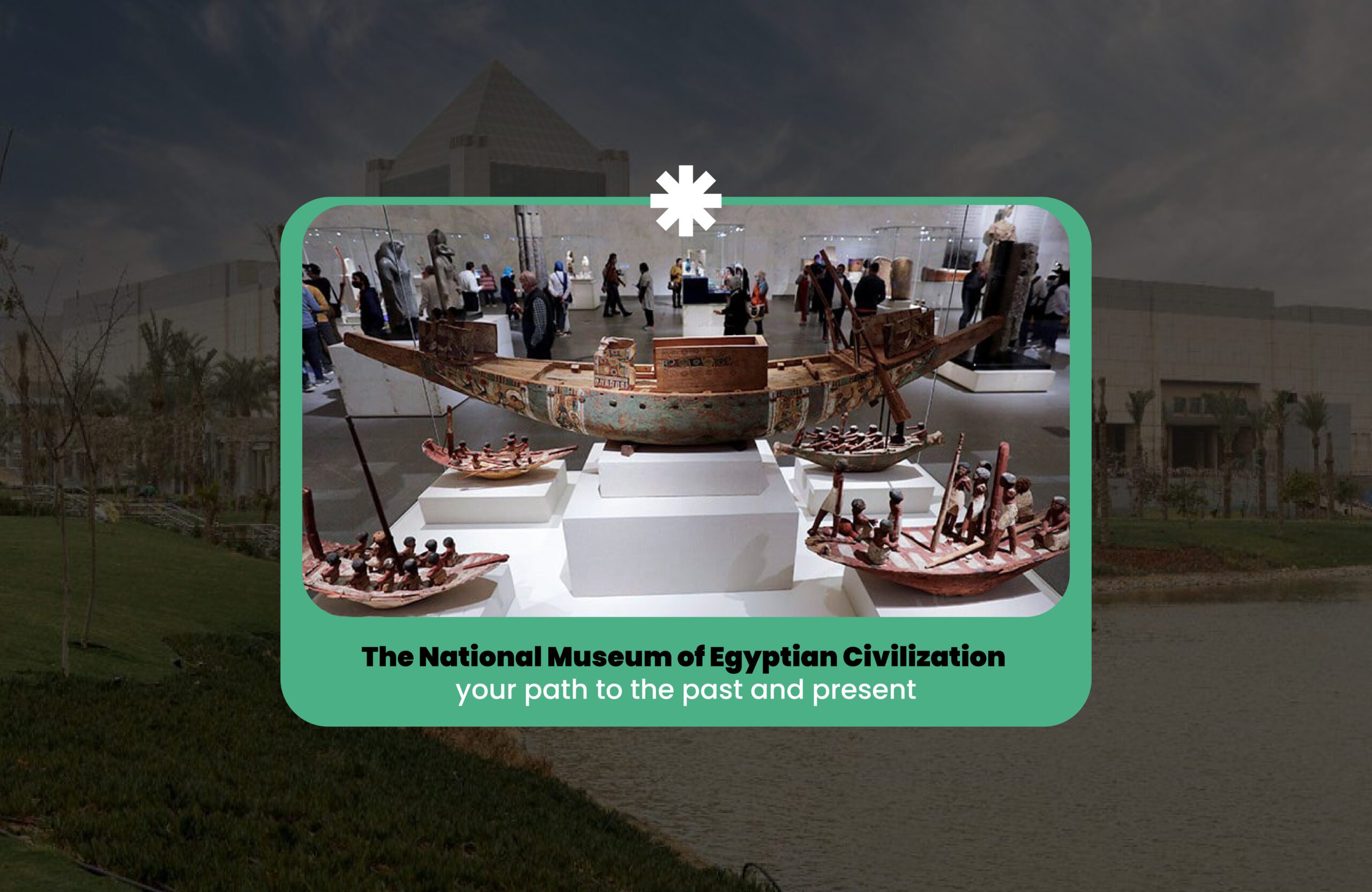New Administrative Capital stadium emerged as a cornerstone of the Egypt International Olympic City Nestled in Egypt’s ambitious New Administrative Capital, symbolizing the nation’s forward-looking investment in sports and international engagement. This modern sports coliseum not only enjoys a strategic location near pivotal landmarks but also represents a nexus of cultural heritage and cutting-edge design, reflecting Egypt’s vision for a global sporting future within a sustainable and technologically advanced urban landscape.

Location:
Misr Stadium is a highlight of the new Egypt International Olympic City, situated in the New Administrative Capital. This location is to the south of the capital, right behind the Tolip Hotel Olympic International City, near New Katameya. It boasts a strategic position, being just 15 minutes away from the New Airport in the Capital. This stadium is part of a broader vision for sports and international events in Egypt, indicating a significant investment in the country’s infrastructure and global sports presence.
New Administrative Capital:

The New Administrative Capital project in Egypt represents a bold and ambitious undertaking aimed at addressing urban congestion in Cairo, fostering economic growth, and propelling Egypt into a new era of modernized infrastructure and governance. By envisioning a smart, sustainable city equipped with state-of-the-art facilities, the project highlights Egypt’s commitment to innovation and sustainability. Its strategic focus on incorporating cultural, educational, and governmental centers positions it as a significant step towards realizing Egypt’s Vision 2030.
The New Administrative Capital of Egypt is a significant urban development project, located about 45 kilometers east of Cairo. Initiated under President Abdel Fattah El-Sisi, the project aims to alleviate congestion in Cairo, house up to 6.5 million inhabitants, and include key government buildings, foreign embassies, educational institutions, and healthcare facilities. The city features the Iconic Tower, which will be Africa’s tallest building upon completion, and plans for the world’s tallest building, the Obrisco Capital Tower. This capital is part of Egypt’s Vision 2030, with a focus on sustainability, smart city technologies, and cultural centers
Take a moment to read about the new administrative capital universities
The design of New administrative capital stadium:

The design of the Egypt Stadium is deeply rooted in Egyptian heritage, with its elliptical plan and roof design inspired by the iconic headdress and royal necklace of Queen Nefertiti. This modern athletic facility features a track surrounded by three levels of oval stands, constructed from reinforced concrete and a steel tendon structure. These elements not only support a membrane roof covering the auditorium but also contribute to the stadium’s distinctive architectural silhouette, highlighted by a vibrant facade of blue and turquoise.
The Contractors:
Construction of the stadium began in 2019 as part of a large Olympic sports complex. It was designed by Italian firms SHESA Architects and MJW Structures with partnership with Cosmos-E engineers and consultants
SHESA Architects:
Studio SHESA, founded in 2002, leverages its founders’ experiences in building design, strategic and industrial design, and urban planning. This multidisciplinary firm engages in various projects across Italy and internationally, from preliminary studies to construction supervision. Their portfolio spans urban development, building and construction design, including urban requalification, renovation of historical centers, leisure and sports facilities, museums, product design, hospitals, educational, and residential buildings. SHESA emphasizes a holistic approach to project management, covering all phases from concept to completion, ensuring specialized management and control throughout the project lifecycle.
MJW Structures:
MJW structures, led by Massimo Majowiecki in Bologna, Italy, specializes in designing large-scale, innovative structures. Their portfolio showcases remarkable projects like stadium roofs and fair district coverings, demonstrating a commitment to safety and innovation. The team consists of highly skilled professionals dedicated to transforming ambitious ideas into tangible realities, marking significant contributions to the field of structural engineering.
Cosmos-E engineers and consultants:
Cosmos-E, established in 1999, is dedicated to being a leading entity in engineering, design, and service sectors. The company prides itself on its commitment to quality, value engineering, and punctuality, attributing its success to strong partnerships with clients and the dedication of its team. Their mission emphasizes delivering top-notch engineering and design works at competitive prices, aiming for their client’s consistent satisfaction. They envision becoming a leader in quality and timeliness while expanding their influence in regional engineering projects through the latest technology, sustainability, and value engineering
Impressive numbers of the new administrative capital stadium
The Egypt Stadium, also known as the Misr Stadium, positioned in the New Administrative Capital, is set to become the largest stadium in Egypt with a seating capacity of 90,000 fans, surpassing Cairo Stadium’s capacity of 75,000. This makes it the second-largest facility in Africa, only after the FNB Stadium in Johannesburg. The construction of this stadium is part of Egypt’s extensive project to establish a new metropolis 45 km east of Cairo, an initiative that began in 2015.
The Olympic City:

Egypt’s ambitious $78 billion Olympic city plan for the 2036 Games includes constructing a new city near Cairo to host state-of-the-art sports facilities. Starting in 2015, this project aims to accommodate 6.5 million people and features a 90,000-seater Olympic Stadium. Egypt’s goal is to make a significant mark on the global sports stage by becoming the first African nation to host the Olympics, showcasing a massive investment in sports infrastructure and development
The Misr Stadium is at the heart of Egypt International Olympic City, marking Egypt’s bid to host global sporting events like the Olympics or FIFA World Cup. This complex, the largest in Africa and the Middle East, encompasses a wide range of sports and administrative facilities, including training grounds, indoor arenas, an Olympic-sized pool, and more. Its development since 2015 highlights Egypt’s ambitions as a future host for major international sports competitions.
In conclusion, the Stadium and the broader Egypt International Olympic City represent a monumental stride in Egypt’s pursuit of excellence in sports and global event hosting. This ambitious project not only showcases Egypt’s commitment to enhancing its infrastructure and sports facilities but also positions the country as a future center for international sports competitions. By intertwining Egypt’s rich cultural heritage with cutting-edge architectural and engineering innovations, these developments stand as a testament to the nation’s vision for progress, sustainability, and global integration into the 21st century.



